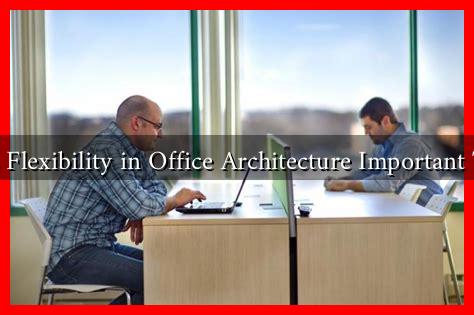-
Table of Contents
Why is Flexibility in Office Architecture Important Today?
In an era marked by rapid technological advancements and shifting work paradigms, the importance of flexibility in office architecture cannot be overstated. As organizations adapt to new ways of working, the design of office spaces must evolve to meet the diverse needs of employees and the demands of modern business. This article explores the significance of flexible office architecture, its benefits, and real-world examples that illustrate its impact.
The Changing Landscape of Work
The traditional 9-to-5 office model is becoming increasingly obsolete. Factors such as remote work, the gig economy, and a focus on work-life balance have transformed how and where people work. According to a report by Gartner, 47% of organizations plan to allow employees to work remotely full-time post-pandemic. This shift necessitates a rethinking of office design to accommodate a more fluid workforce.
Benefits of Flexible Office Architecture
Flexible office architecture offers numerous advantages that can enhance productivity, employee satisfaction, and overall organizational effectiveness. Here are some key benefits:
- Adaptability: Flexible spaces can be easily reconfigured to accommodate different team sizes, project needs, or work styles. This adaptability allows organizations to respond quickly to changing business conditions.
- Collaboration: Open and flexible layouts encourage collaboration among employees. By breaking down physical barriers, teams can communicate more effectively and foster innovation.
- Employee Well-being: A flexible office design can incorporate elements that promote well-being, such as natural light, greenery, and quiet zones. These features contribute to a healthier work environment.
- Cost Efficiency: By optimizing space usage, organizations can reduce overhead costs. Flexible designs can accommodate varying numbers of employees without the need for constant renovations.
Real-World Examples of Flexible Office Architecture
Several companies have successfully implemented flexible office designs, showcasing the benefits of this approach:
- WeWork: Known for its co-working spaces, WeWork has revolutionized the concept of flexible office environments. Their spaces are designed to be easily reconfigured, allowing businesses of all sizes to find a suitable workspace.
- Google: Google’s offices are famous for their innovative designs that promote flexibility. With movable walls, collaborative spaces, and relaxation areas, Google encourages creativity and adaptability among its employees.
- Airbnb: The company’s San Francisco headquarters features a flexible layout that supports both collaborative and individual work. The design includes various workspaces, from open areas to quiet zones, catering to different employee needs.
Statistics Supporting Flexibility in Office Design
Research supports the notion that flexible office architecture leads to improved employee performance and satisfaction. A study by the International Facility Management Association (IFMA) found that:
- Flexible workspaces can increase employee productivity by up to 30%.
- Companies with flexible office designs report a 20% increase in employee satisfaction.
- Organizations that embrace flexibility see a 15% reduction in employee turnover rates.
Challenges and Considerations
While the benefits of flexible office architecture are clear, there are challenges to consider:
- Implementation Costs: Initial investments in flexible designs can be high, though they often pay off in the long run.
- Employee Resistance: Some employees may prefer traditional office setups. Change management strategies are essential to ease the transition.
- Technology Integration: Flexible spaces require robust technology infrastructure to support remote work and collaboration tools.
Conclusion
In conclusion, flexibility in office architecture is crucial in today’s dynamic work environment. As organizations navigate the complexities of modern work, adaptable office designs can enhance collaboration, employee well-being, and overall productivity. By learning from successful case studies and leveraging the benefits of flexible spaces, companies can create work environments that not only meet current needs but also anticipate future challenges. Embracing flexibility is not just a trend; it is a strategic imperative for organizations aiming to thrive in the 21st century.
For more insights on flexible office design, you can visit Forbes.

